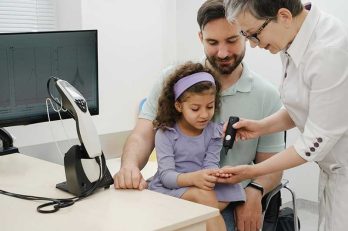Childhood obesity is an increasing global concern, having serious consequences for a child’s physical and mental health. However, with the correct nutritional practices, we can reverse this tendency and put our children on track for a healthier future. Here are five simple strategies that can significantly help prevent and manage childhood obesity through nutrition.
1. Begin with a balanced breakfast
Begin your child’s day with a nutritious breakfast containing a variety of proteins, whole grains, and fruits. A good breakfast boosts metabolism and helps you maintain a healthy weight.
2. Incorporate fruit and vegetables
Make fruits and vegetables a mainstay of your child’s diet. They are low in calories yet high in fiber, vitamins, and minerals. Encourage your child to consume a rainbow of fruits and vegetables every day to ensure that they receive a variety of nutrients.
3. Choose whole grains
Replace refined grains with whole grains, such as oats, quinoa, brown rice, and whole wheat bread. Whole grains have more fiber, which can help your child feel filled for longer and avoid overeating.
4. Limit sugary drinks
Sugary beverages, such as sodas, juices, and sports drinks, are significant contributors to obesity. Encourage your child to consume water or milk instead. If they want something flavorful, try adding slices of fruit to water for natural sweetness.
5. Practice Portion control
Teach your child how to understand portion amounts. Use smaller dishes to naturally reduce portion sizes, and teach kids to respond to their hunger cues to avoid overeating.
6. Snack Smart
Instead of packaged snacks heavy in sugar or saturated fats, go for healthy alternatives such as nuts, yogurt, cheese, or whole fruit. Snacking can be a beneficial aspect of a child’s diet if done correctly.
7. Get Active Together
Nutrition is inextricably linked to physical activity. Encourage your youngster to be active for at least 60 minutes each day. Sports, park play, dancing, and biking are all possible activities.
8. Limit screen time
Excessive screen usage is related with sedentary behavior and unhealthy snacking. Limit your screen time in favor of physical play or outdoor activities.
9. Involve your child in meal planning and preparation
Involving your child in meal planning and preparation can teach them about nutrition while also encouraging them to try new foods. It’s also an excellent way to spend quality time together.
10. Educate about food choices
Teach your child the value of nutrition and how it impacts the body. Understanding why particular meals are healthier will help kids make better selections for themselves.
Combating childhood obesity is a difficult challenge that necessitates a comprehensive strategy. By implementing these ten basic dietary actions, you can have a big impact on your child’s health, allowing them to lay a solid foundation for a healthier existence. Remember that tiny improvements can have big benefits. Encourage these healthy habits among your family members, and collectively, you can prevent childhood obesity.




